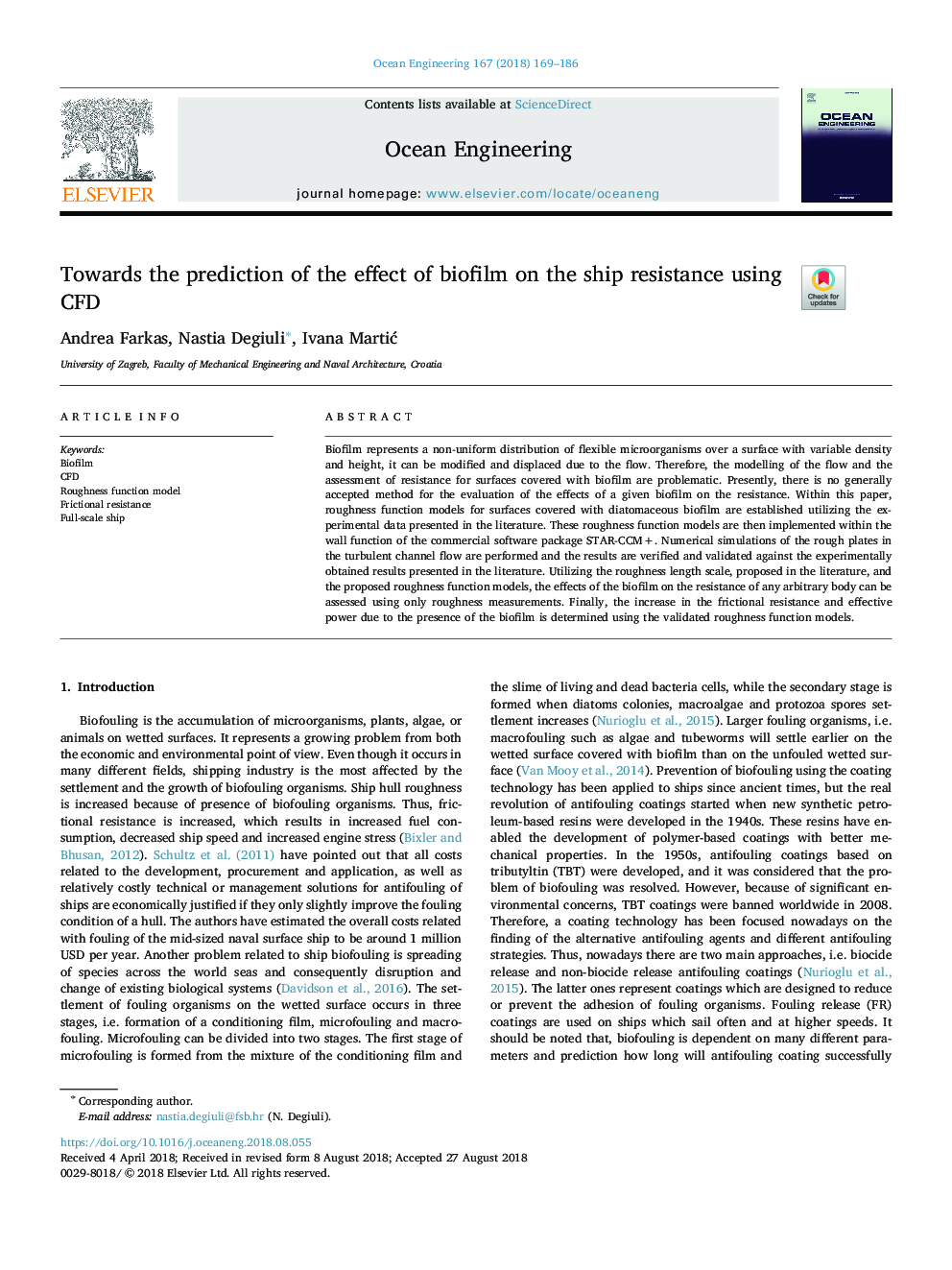| Article ID | Journal | Published Year | Pages | File Type |
|---|---|---|---|---|
| 10136178 | Ocean Engineering | 2018 | 18 Pages |
Abstract
Biofilm represents a non-uniform distribution of flexible microorganisms over a surface with variable density and height, it can be modified and displaced due to the flow. Therefore, the modelling of the flow and the assessment of resistance for surfaces covered with biofilm are problematic. Presently, there is no generally accepted method for the evaluation of the effects of a given biofilm on the resistance. Within this paper, roughness function models for surfaces covered with diatomaceous biofilm are established utilizing the experimental data presented in the literature. These roughness function models are then implemented within the wall function of the commercial software package STAR-CCM+. Numerical simulations of the rough plates in the turbulent channel flow are performed and the results are verified and validated against the experimentally obtained results presented in the literature. Utilizing the roughness length scale, proposed in the literature, and the proposed roughness function models, the effects of the biofilm on the resistance of any arbitrary body can be assessed using only roughness measurements. Finally, the increase in the frictional resistance and effective power due to the presence of the biofilm is determined using the validated roughness function models.
Keywords
Related Topics
Physical Sciences and Engineering
Engineering
Ocean Engineering
Authors
Andrea Farkas, Nastia Degiuli, Ivana MartiÄ,
